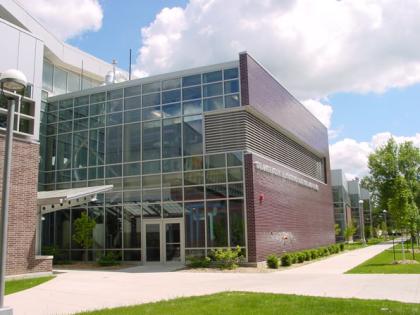 BIG RAPIDS – Ferris State University students from around the country gathered together
at the Granger Center for Construction and HVACR during the week of Aug. 1 for laboratories
to fulfill requirements for online courses taught by John Eric Quilitzsch and Douglas
Zentz, associate professors in the College of Engineering Technology.
BIG RAPIDS – Ferris State University students from around the country gathered together
at the Granger Center for Construction and HVACR during the week of Aug. 1 for laboratories
to fulfill requirements for online courses taught by John Eric Quilitzsch and Douglas
Zentz, associate professors in the College of Engineering Technology.
These 300-level Heating, Ventilation, Air Conditioning and Refrigeration courses,
taught by Quilitzsch and Zentz, blend online learning with a practical hands-on educational
experience on Ferris’ main campus during the visit.
“Online learning of technical material is difficult and our students often comment
on how much work is involved with online courses and how challenging it is for them
to adapt to an online environment,” Zentz said. “Students need to adapt because online
courses offered in a blended environment, like this one, prepares them for life beyond
college. In the real world of HVACR, in the 21st century, students are expected to
work in this climate as they advance their professional careers.”
Distance learning students in Ferris’ HVACR Engineering Technology program travel
to the Big Rapids campus for five days during the summer to work with the HVACR systems
and controls in the energy lab. During the campus visit, lab time provides a hands-on
educational experience in fluid measurement, heat transfer, control programming, loop
tuning and system commissioning for online students.
“For the working professional, the blended environment of online and hands-on application is absolute for success in the online HVACR Engineering Technology program,” Zentz said. “The biggest advantage is the required five-day Granger Center laboratory experience. This is where the most meaningful learning takes place.”
Zentz noted that Ferris’ Granger Center for Construction and HVACR provides Ferris State students with a unique learning opportunity as it connects the brain to a learning style that is most familiar to students: learning visually by doing and seeing.

